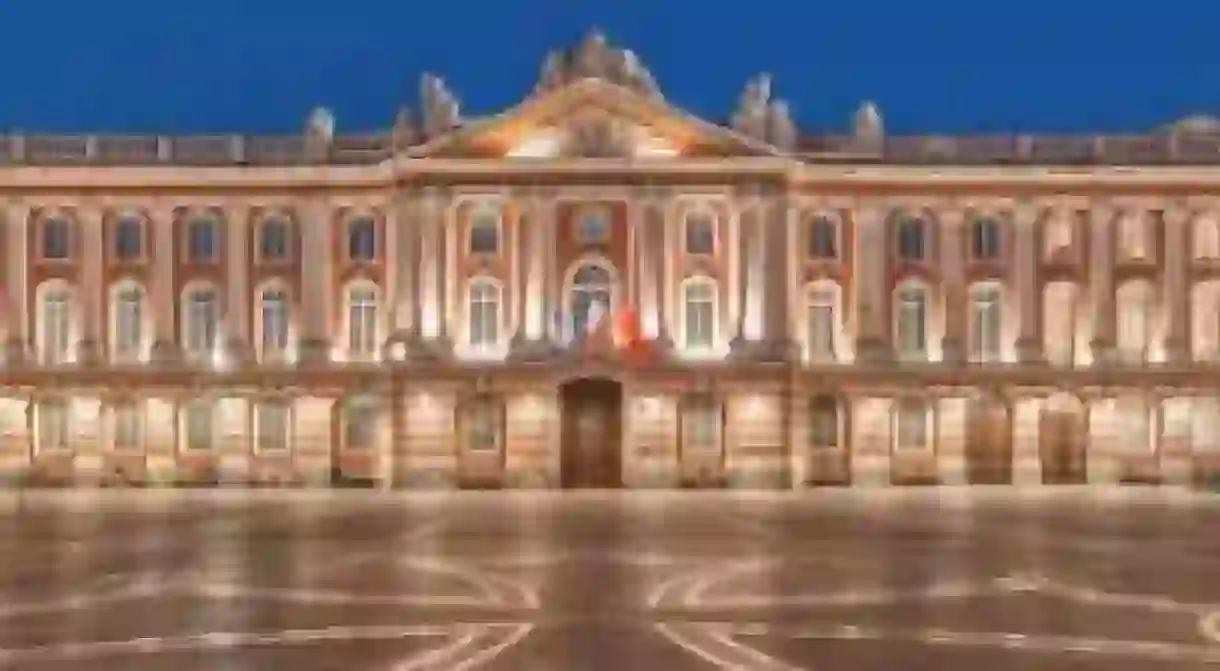10 Things To Do And See In Centre Ville, Toulouse, France

Centre Ville, Toulouse, also known as “la Ville Rose” or the pink city, is filled with endless pieces of magnificent architecture, sculptures and history for travelers and locals to fully immerse themselves in. Aside from Toulouse’s traditional French restaurants, explorers can dive into museums overflowing with Renaissance art or stroll through gardens spread miles wide.

Place du Capitole
Hotel
What would Toulouse be without its Capitole? With Renaissance architecture and daily and seasonal activities aplenty, there’s always something going on at the Place du Capitole. The spot is surrounded by restaurants, shops and plenty of cafes, and has undergone construction and reconstruction many times since it was first built in 1190. Its pink bricks come from the Neoclassical style, truly reflecting Toulouse’s title of “The Pink City”, while today the Capitole also contains the City Hall coupled with the Théâtre du Capitole de Toulouse – both majestic sights in their own right. Grand Rond | © Tonio94/WikiCommons
Grand Rond
In the middle of the urban city lies the Grand Rond, a sweet escape in the form of a beautiful garden. Inspired by the English bowling green, the Grand Rond turned from a place to bowl into a floral haven in the midst of the town. The oval-shaped garden was completed in 1754 and now features astounding statues such as ‘David Slaying Goliath’ by Antonin Mercie and ‘Winner of the Cockfight’ by Alexandre Falguiere. Musée des Augustins | © Guérin Nicolas/WikiCommons
Musée des Augustins
Church, Museum
If the architecture of Toulouse town alone isn’t enough, Musée des Augustins features French artists from past and current centuries. With Romanesque, Gothic and Renaissance sculptures, Musée des Augustins takes visitors through French history using the medium of art. Paintings from the French schools of the 15th and 18th centuries are displayed throughout the museum, while art from famous names like Guernico and Philippe de Champaigne form other highlights of this veritable Toulouse must. Church of the Jacobins | © Kimon Berlin/WikiCommons
Church of the Jacobins
Between 1230-85, the Dominicans built the Church of the Jacobins, and it has been restored over the the years since to preserve its southern Gothic architecture. With bricks, stained-glass windows and the famous “palm of the Jacobins”, this fascinating spot offers a host of interesting moments. And aside from all the intricate buildings to explore, Church of the Jacobins also hosts concerts, festivals and exhibitions in its cloister.
Church of the Jacobins, Parvis des Jacobins, Toulouse, France, +33 5 61 22 23 82

Basilique Notre-Dame de Daurade
Market
Originally a temple dedicated to Apollo, Notre-Dame de la Daurade was established in 410 after the emperor Honorius began converting Pagan temples into Christian churches. Notre-Dame de la Daurade is now well-known for its organ, and the church, built in 1776, has been listed as a Monument Historique by the French Ministry of Culture. Alongside the basilica’s famous organ is the Black Madonna, a statue of Mary depicted with dark skin. Beef Heart Victor Hugo Market | © amanderson2/Flickr
Victor Hugo Market
Market

While there are countless restaurants in Toulouse to eat at, why not stop by the historic Victor Hugo market for a bite to eat? Victor Hugo market began as a wood, fodder and flea market in 1827, then under the different name of Place du Marché-au-Bois. After being renamed in 1886 for the coronation of the poet who won the Floral Games and in honor of the author of Les Miserables and The Hunchback of Notre Dame, Victor Hugo Market now hosts vendors of every variety, from bakers, to butchers, confectioners, creamers, florists, tripiers, cellars and plenty more.
Basilica of Saint Sernin
Building
One of the many holy sites of Toulouse, the Basilica of St. Sernin is one that’s not to be missed, complete with its 11th century Romanesque architecture and gorgeous interior. Also featuring relics of at least 128 saints and a thorn rumored to have come from the Crown of Thorns itself, the Basilica of St. Sermin was built between 1080 and 1120 in place of a basilica from the 4th century. Today, it is the largest Romanesque building still standing in Europe and a UNESCO World Heritage Site.
Jardin Japonais
Bridge, Park
Jardin Japonais, near the ancient Armand Duportal, is a garden for meditation and rest. A botanical oasis of the east is rare in a city like Toulouse, yet it stands in this southern city in homage to the gardens found in Kyoto and Tokyo. The red wooden bridge connecting the islands here represents the Japanese allegory of paradise and is hidden away from the rest of the park through layers of green trees and flower beds. Also amongst the greenery lies the lake, a tea pavilion and a bust of Deshimaru. Jardin Japonais de Toulouse | © Ceridwen/WikiCommons
Les Abattoirs
Les Abattoirs allows guests to step out of historical museums and basilicas and into modern and contemporary art. The collection here – located just on the edge of the Centre Ville and across the river – holds about 3,400 pieces dating from the past century to the current day. Beginning in the 1950s after World War II, the artistic trends featured here include figures such as Georges Mathieu and Karel Appel. Contemporary art from the 1970s and 1980s is mostly represented by French artists like Robert Filliou and Gina Pane, while the special exhibitions change every few months.
Musée du Vieux Toulouse
Museum
Dedicated to chronicling the millennia old folk histories and local traditions of Toulouse and its surrounding area, this fascinating and rather off-the-beaten-track museum is well worth a stop-off while touring the streets of the Centre Ville. Get ready to delve into the past with the interactive and panoramic exhibitions held here, which all help to unravel tales of Toulouse’s past.













